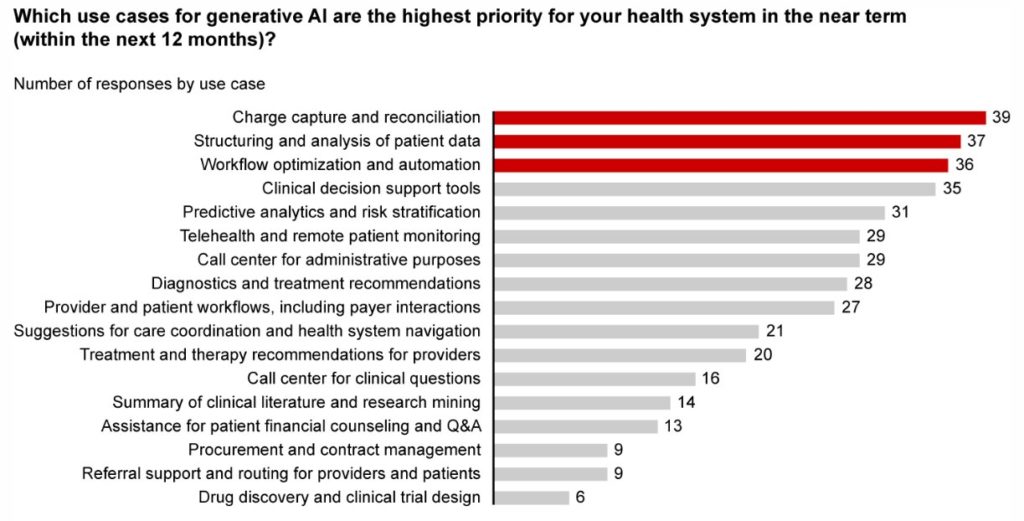In a recent Bain survey of health system executives, 60% cited rising costs as their greatest concern. Bain’s research shows artificial intelligence (AI) may hold part of the answer, but few hospitals are tapping into its potential.
With the costs to train a system down 1,000-fold since 2017, AI provides an arsenal of new productivity-enhancing tools at a low investment. Bain’s survey of health system executives reveals that 75% believe generative AI has reached a turning point in its ability to reshape the industry, yet only 6% have an established generative AI strategy.
“Providers and payers are looking for profit opportunities while also doubling down on employee morale, clinical care, and patient experience,” said Eric Berger, a partner in Bain’s Healthcare & Life Sciences practice.

“Many recognise the potential AI offers to boost productivity, yet they are acutely aware of the uncertainties around evolving technology. This uncertainty cuts both ways—while there is hype, there is also opportunity. Leading companies are taking this technology shift seriously and get started with highly focused, low-stakes use cases with some near-term ROI while building up the experience and confidence needed to invest in a more transformative vision.”
Eric Berger
Prioritising solutions for the months ahead

Generative AI has the power to mitigate some of the providers’ biggest woes, including clinician shortages and physician burnout. Some generative AI applications are already streamlining administrative tasks and allowing thinly stretched physicians to spend more time with patients.
This type of quick relief is critical, considering that the heightened risk of a recession will only compound margin woes, and the US could be short up to 104,900 physicians by 2030, according to the Association of American Medical Colleges.
Many health systems are eyeing imminent opportunities to reduce administrative burdens and enhance operational efficiency. They rank improving clinical documentation, structuring and analysing patient data, and optimising workflows as their top three priorities for the next 12 months.
Looking ahead two to five years, executives are most interested in predictive analytics, clinical decision support, and treatment recommendations.
Planning for challenges down the road
It’s hard not to catch AI “fever.” But there are real challenges ahead. Solutions to the greatest hurdles aren’t yet keeping up with the rapid technology development. Resource and cost constraints, a lack of expertise, and regulatory and legal considerations are the largest barriers to implementing generative AI, according to executives.
Even when organisations can overcome these hurdles, one major challenge remains focus and prioritisation. In many boardrooms, executives are debating overwhelming lists of potential generative AI investments, only to deem them incomplete or outdated given the dizzying pace of innovation. These protracted debates are a waste of precious organisational energy—and time.
Starting small to win big
Leading companies are forming a pragmatic strategy that considers current capabilities, regulations, and barriers to adoption. Executives can work together to enforce four guiding principles:
Pilot low-risk applications with a narrow focus first. When gaining experience with currently available technology, companies are testing and learning their way to minimum viable products in low-risk, repeatable use cases. These quick wins are typically in areas where they already have the right data, can create tight guardrails, and see a strong potential return on investment.
Decide to buy, partner, or build. CEOs will need to think about how to invest in different use cases based on the availability of third-party technology and the importance of the initiative.
Funnel cost savings and experience into bigger bets. As the technology matures and the value becomes clear, companies that generate savings, accumulate experience and build organisational buy-in today will be best positioned for the next wave of more sophisticated, transformative use cases.
Remember AI isn’t a strategy unto itself. To build a true competitive advantage, top CEOs and CFOs are selective and discerning, ensuring that every AI initiative reinforces and enables their overarching goals.





